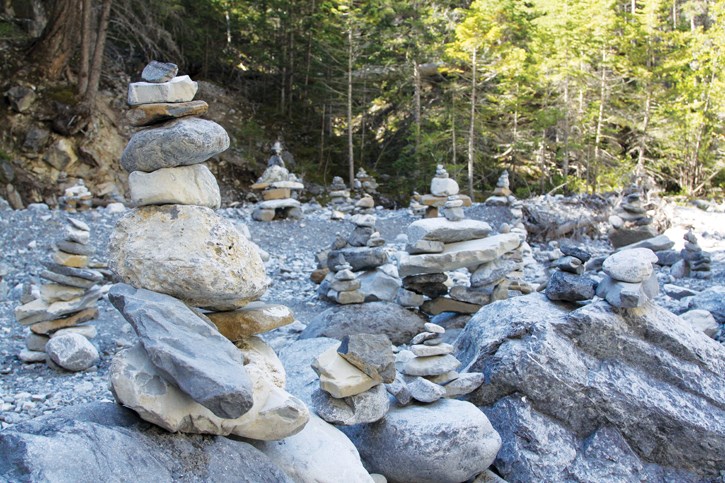BANFF – A proliferation of rock cairns in the mountain national parks has led Parks Canada to ask people to stop stacking stones.
More and more rock cairns are being built in busier front country areas of Banff National Park, such as Tunnel Mountain and Lake Minnewanka, but also in more remote backcountry regions.
Parks Canada officials say formal rock cairns are used for marking trails and for public safety, but it has become more of a hobby for people who want to mark where they’ve been.
“We don’t encourage any building of stone cairns. The time-honoured approach of leave-no-trace would include not piling rocks and stones around the place,” said Greg Danchuk, visitor experience manager with Banff National Park.
“Certainly, on Tunnel Mountain in the recent two or three weeks we’ve really seen a proliferation. There’s a vast number.”
For centuries, humans have been building these markers for a host of different reasons, including a landmark for navigation or as burial monuments, for example.
Lake O’Hara Trails Club is also noticing more and more rock cairns at Lake O’Hara in Yoho National Park.
“Please refrain from saying ‘I was here’ with rock graffiti, and refrain from moving rocks placed by the trail crew to define routes,” according to the group’s Facebook post.
Trail crews build rock cairns to mark a trail to keep hikers on the right track and away from a potentially dangerous place.
“Particularly in the higher alpine, they can be used as a marker for trails to get from point A to point B,” said Danchuk.
“If there’s some being built by removing stones from some of those and rebuilding new ones, it could be confusing to people and could lead to safety issues if people get disoriented and lost.”
Moving rocks shifts soil and makes the area more prone to erosion, and takes away from the natural beauty of a place, said Danchuk.




